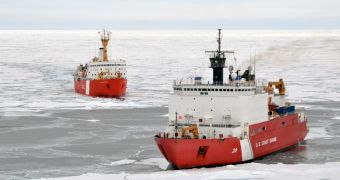Maps produced by the US National Oceanic and Atmospheric Administration's (NOAA) Office of Coast Survey (OCS) have recently been made available to the general public, in an online database. The maps cover sea floors around the world.
They primarily focus on continental shelves, the deep ocean, and coastal areas, and were originally developed as part of a nautical charting effort. Features such as deep canyons, ripples, landslides and likely fish habitats were also included in these maps, alongside numerous other undersea features.
The latest high-resolution bathymetric data from the OSC were included in the worldwide map as well. With the new tool at their disposal, investigators will have easier, more convenient access to scientific data to include in their studies.
The website showcasing the new map has a very intuitive, easy-to-use interface, which uses a color-shaded relief technique to depict depth values. This makes bathymetric data very easy to interpret.
“NOAA’s ocean bottom data are critical to so many mission requirements, including coastal safety and resiliency, navigation, healthy oceans and more. They are also just plain beautiful,” Susan McLean says.
She holds an appointment as the chief of the Marine Geology and Geophysics Division at NOAA, in Boulder, Colorado. This Division is included in the agency's National Geophysical Data Center, and is “responsible for compiling, archiving and distributing Earth system data,” a NOAA statement reveals.
“For serious scientists, the new viewer allows an important preview capability that will help speed data access and analysis. But its real power is exposing a new audience to NOAA data,” NGDC bathymetric program manager, Dan Price, explains.
“I showed the new viewer to my neighbors and they were blown away by the detail and features revealed,” he goes on to say.
Maps such as this one can easily be incorporated into computer models covering coastal flooding, such as that caused by tsunami or tropical storm surges. These events have the potential to claim hundreds of thousands of lives in a fell swoop, and cause billions in damages.

 14 DAY TRIAL //
14 DAY TRIAL //